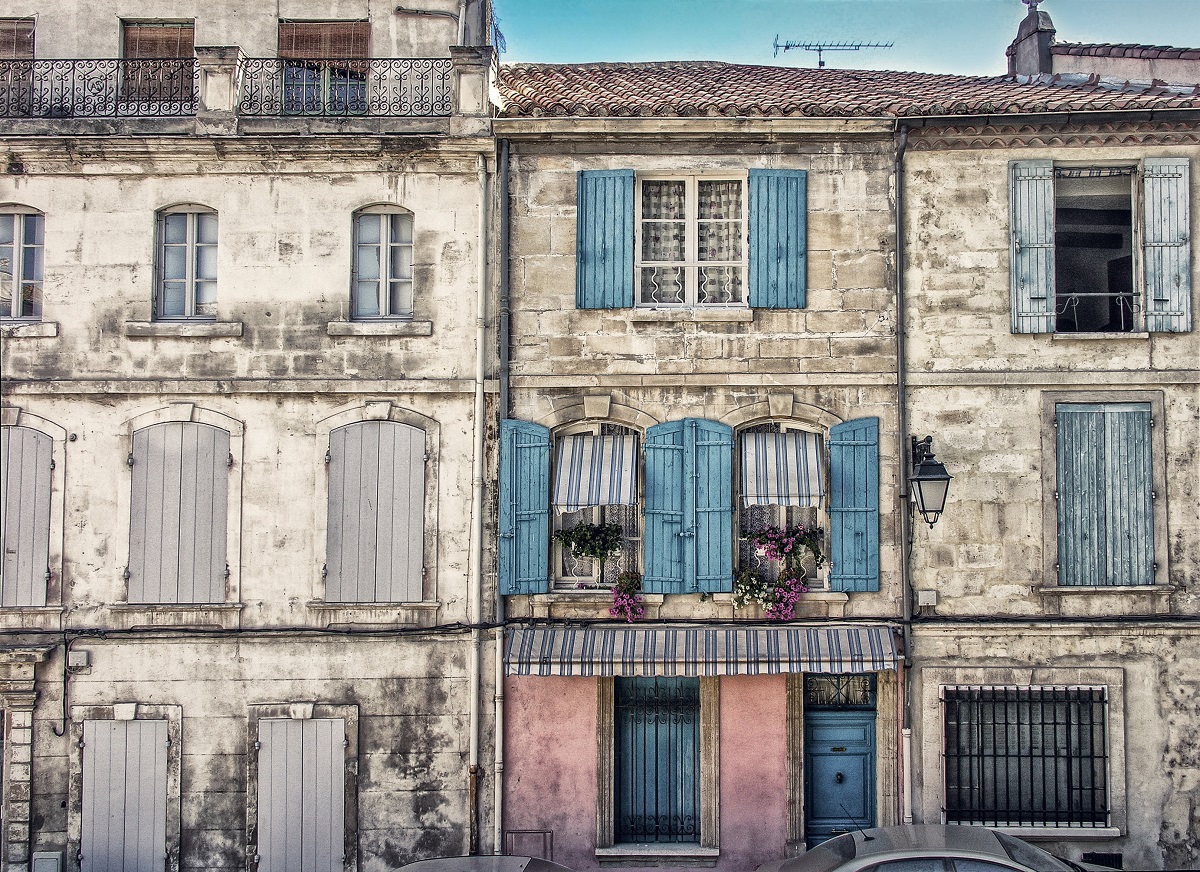Buying a home in Toronto, no matter what type of home you are buying, whether you are getting your first place, a starter home, condo, older fixer-upper with great bones, or a newly built luxury condo is exciting. However, depending on how old the home you are looking to buy, there will be things that you need to consider and keep in mind that might be different than if you were looking to buy a newer home, a newly built or pre-construction home.
This is where this guide comes in. This article is written for people considering buying an older home in Toronto but who want to know what they should be looking out for, what they should be keeping in mind, the pros and cons of buying an older home in Toronto.
Related article: 5 Common Mistakes to Avoid for a First Time Home Buyer in Toronto
As with all of our other guides this guide is meant to be a jumping-off point in your research and your actual experience with looking at, buying, and/or owning an older home might differ from what is described in this guide. If you actually do decide to look at, purchase, and own an older home, you should work with a real estate agent or broker you trust, who can advise you on these matters. And if you are ever in doubt consult professionals who you trust, to look at your home, advise you on what is going on and how to best proceed.
What you need to know about buying old houses in Toronto
It is important to be patient and flexible if you are considering buying and owning an older home in Toronto. Homeownership is not for the faint of heart, even if you own a new home there will be things that you will need to deal with, the maintenance you will need to do, repairs, etc.
However, if you are considering buying an older home you should have money saved for repairs, updating your home, etc. and additional home inspections as needed. In other words, this cannot be stressed enough, but you should consider having professionals come in to check your home’s major systems so you have an idea what condition the inside of your home is in.
It is important that this list of the things you should be looking out for is not exhaustive, it is meant to help you consider what you should be looking out for and it is only a starting point.
Related article: The Ultimate Buyer’s Guide for Buying a House in Toronto
You should be looking out for the following things:
Knob and Tube Wiring
Knob and tube wiring is also known as open wiring was an electrical wiring method used when wiring residential homes for electricity from the 1880s to the 1940s. Since this period, standard methods and practices for electrical wiring have changed.
This means that knob and tube wiring is no longer installed. However, you can still get knob and tube wiring for maintenance purposes. In some cases, knob and tube wiring are considered safe but in other cases, it is not considered to be safe with how much power many modern-day devices required.
You may find that if your home has knob and tube wiring, many insurance companies will not provide coverage or renew coverage for homes that have knob and tube wiring. In some situations, insurance companies require homeowners to totally replace all of the electrical knob and tube wiring before they will insure a home.
If you are not sure if your home has knob and tube wiring and if it does, if it is safe or needs to be replaced, you should bring in a professional electrician to come and look at it.
Asbestos
According to Asbestos.com, asbestos is “a naturally occurring mineral that can be pulled into a fluffy consistency. Asbestos fibres are soft and flexible yet resistant to heat, electricity and corrosion. These qualities make the mineral useful, but they also make asbestos exposure highly toxic.”
Asbestos is known to cause many diseases including different forms of cancer such as Mesothelioma and is banned in many countries. Asbestos is unfortunately found in many products such as insulation for homes, cement, drywall compounds, paints, sealants, and adhesives.
Older homes might contain legacy asbestos products such as vinyl asbestos tiles, asbestos cement, Asbestos roofing felt, Asbestos reinforced plastics, Asbestos adhesives, sealants, and coatings.
If you are looking at an older home and concerned about the possibility of Asbestos, you NEED to leave the evaluation and removal of anything containing asbestos in your home to trained and certified asbestos abatement professionals. This is for your own safety.
Depending on your situation it might be necessary to remove any materials that contain asbestos and in other cases, it is safest to leave this material undisturbed or encapsulate it with a special sealant. You should hire a professional certified to work with asbestos to come and evaluate your home to see if there is asbestos and if there is asbestos how to best proceed.
Termites, mice and other creatures
Another risk of buying an older home, especially in Ontario, are the risks for Termites, there are many termite infestations in Ontario. Termite colonies can destroy homes relatively quickly.
Other risks include mice and other living things that you do not want to be sharing your home with. If you are unsure about your risk, you can consider having a pest control and termite professional visit your home before closing to assess what your situation is.
Potential plumbing, drainage, mould, and/or moisture-related issues
Depending on how old your home is, you might want to bring in a professional plumber to inspect your sewer system, to see if it is in good working order. Things on the outside might appear to be excellent working order but you should have a trained professional look at the pipes, to see if there is anything that could leak or any potential moisture-related issues that could cause mildew, mould, and worse.
Lead pipes and water supply lines
In older homes, there are commonly lead pipes, depending on how old your home is, you should get your pipes checked if they are lead pipes. If your home was built before the 1950s you should assume unless given information that proves otherwise that your home has lead water pipes.
In fact, up until the 1980s, lead soldering was applied to copper pipes to join these pipes together. Lead pipes are not always harmful but lead levels in water and in the paint can be extremely dangerous and can lead to lead poisoning, which can be incredibly harmful.
Another potential thing you should be on the lookout for are water supply lines. If there is an issue with your water supply line, the line that brings water to your home from municipal water lines to your home this could be a problem down the line. You should consider having someone inspect these lines to see if there might be any potential problems down the line.
Related article: Inspection Checklist when buying a home in Toronto
Insulation
Many older homes were not built with insulated walls, instead, the walls were built with open cavities so the home can breathe. This was because builders know that moisture is the biggest issue for any home and if water was allowed to get into the walls this would cause a host of problems. But if they built homes that are not tightly built like they are today, this meant that looseness in the building structure means that homes would dry out quickly.
However, insulating homes built before the more modern technology for insulation was developed now presents certain challenges. If you want to insulate an older home, it is recommended that you start with the attic and crawl spaces and consider weather-stripping doors, adding heavy drapes, and doing other things.
But it is recommended that you leave the walls alone since if you insulate the walls you could have issues like peeling paint, wood rot, and mould. Unless you want to bring in a professional who will rewrap your entire home with special insulation material which could be time consuming and expensive.
Lead paint
Any home built before 1978 might be at risk for having lead paint. Lead paint can be extremely dangerous and toxic since it can flake off and become toxic dust with microparticles. If you are worried about lead paint in your home, you can have a special inspector who works with lead paint come and inspect your home to see if this might be a problem that you might face.
If you are working with a contractor ask to make sure they are certified in lead abatement and expect to pay a contractor higher rates if they are doing lead abatement in your home. If there is lead paint in your home do not allow anyone who is pregnant, who has a compromised immune system, or children into the area until the lead paint has been cleaned up.
Check out fireplaces and chimneys
This goes without saying but if there are original fireplaces in the home and/or are chimneys, do yourself a favour and bring in a chimney inspector. Have these inspected and make sure they are in good working order before you decide to use them for your own safety. This way you will know what state they will be in and whether or not anything needs to be repaired or replaced.
Sloping floors
Another thing you should be on the lookout for is sloping floors, this can sometimes happen in older homes if the floors have warped. While sloping floors are not as big of an issue as say lead paint, it is something that you might encounter in an older home.
Closets
It is important to remember that having larger or even walk-in closets in homes is a more recent phenomenon. Do not be surprised if you are looking at older, historic homes which lack closet space. In previous eras, people would have stored many of their items in trunks, chests of drawers or hooks on the wall. And hangers were not even invented until the late 1800s which means that closets during different eras are much smaller than modern-day closets.
Heritage designation
Another possible thing you might encounter if you buy an older, historic home in Toronto is the Heritage Designation under the Ontario Heritage Act. If you have a designated heritage home, you must notify the City of Toronto within 60 days of your intention to alter to demolish the structure.
This designation means that any alteration or demolition of the structure needs to be approved by The City Council. As a property owner, you can be legally refused a permit to alter or demolish your home by The City Council, although you have the right to appeal this decision. There are currently at least 4,500 heritage designated homes in the Greater Toronto Area.
However, if you have a heritage designated home expect to deal with more red tape if you plan to alter or renovate your home and face higher construction costs especially if your home has to look like other comparable homes in your neighbourhood.
Related article: How to Find the Best Places to Live in Toronto?
Pros of buying an older home in Toronto
There are many advantages associated with buying and owning an older home in Toronto. There are many unique features such as fireplaces, high ceilings, hardwood floors, and architectural details, you can find in older homes. Usually, older homes have more mature trees and more lush landscaping than newly built homes in larger housing developments.
These homes tend to have stories and character, and might have more space than a newer home and might be in a better location than a newly built home. Homes that are 60, 70, 80 or more years old that are still in good shape with regular and preventative maintenance might be built better than homes built today and might last longer in the long term than newly built homes.
The construction quality for older homes might be better because the materials that might have been used might be higher quality and meant to last longer than newly built homes. Additionally, you might be able to have a short closing, 30, 60, or 90 day closing period, much faster than if you are buying a pre-construction home and dealing with potential construction delays and other delays associated with buying a newly built home.
Cons of buying an older home in Toronto
While there are advantages associated with buying and owning an older home in Toronto. There are some disadvantages associated with buying an older home. For example, you might need to do extra maintenance, such as needing to update, repair and replace a lot of things so this can get expensive and time-consuming.
The number of home inspections and different professionals you might need to bring in for an older home can also be expensive and headache-inducing.
A newer home might require less maintenance at the beginning than an older home and you might be able to customize a newly built or pre-construction home in a way that you would not be able to if you are not buying a newly built home. Newly built homes might be turnkey and move-in ready, this might not be the case for some older homes.
Finally, older homes might be drafty because older homes were not so tightly built like newer homes. This means that you might have potentially higher utility bills, especially for heating and electricity if you are in a drafty home in winter you might feel colder and might need to fix the insulation.
Related article: Pros and Cons of Buying Homes in Downtown Toronto
Things to do when buying an older home
If you are buying an older home. First, make sure to do a home inspection and figure out if and when any updates or renovations were done. If no one knows if and when the home has been updated if ever has been updated, make sure to bring in professionals to check on your home’s major systems, structural integrity, roof, plumbing, electrical, HVAC system, etc.
Having these professionals come in and check your home can help ensure that all of the systems in your home, if they are not presently in good working order, can be brought into good working order. You should be prepared to pay for repairs, for things to be replaced and for your home to be updated as needed.
These things might be things that you might want to do and things that are unexpected and make sure to have money set aside or saved for this when you inevitably want or need to repair or replace something. Also if you want to do renovations, this might be a good fit for you to find a fixer-upper that you like and are willing to put in the time, energy, money, etc. into customizing into your dream home.
Conclusion
While there are things that you should be keeping in mind when you are looking to buy, buying, and owning an older home, owning an older home can be incredibly rewarding. There are many advantages associated with owning an older home that you might not be able to take advantage of if you did not own an older home.
If you are looking to buy and own an older home be prepared for the unexpected and be sure to save money for any maintenance, updating, work, renovation(s), and other things that need to be done. Remember if you have any doubts or concerns, consult a professional who you trust and who knows what they are doing.
On the outside of your home, everything might look fine. But for example, you might have a professional electrician come in to check the wiring for your home and then learn that you need to have your home rewired for a fire or safety hazard or there is some other issue.
Buying a home is a huge decision and you want to be prepared as possible for whatever you might encounter. These means do not skip out on the home inspection. As mentioned earlier, you even consider bringing in professionals in different areas to assess what state different areas and systems of your home are in.
Yes, this might sound like overkill but wouldn’t you rather know if there might be a potential major, and potentially expensive issue with your home before you move in? So you can plan for this and fix this before it becomes a problem. As the saying goes, an ounce of prevention is a pound of cure.
However, you might bring in professionals who work in the major areas in homes, and they check things like your HVAC system, roofing, electrical, plumbing, etc. and find out that everything is in tip-top shape. It is better to go in being prepared and go in with your eyes open so you are informed and can take on the challenges and that you will be facing in your journey as a homeowner.
Some people might not love the maintenance and other things associated with owning and living in older homes. Owning an older home is not right for everyone, if you are someone looking for a turn-key, move-in ready home, with all new appliances and modern amenities, you might not be well suited to owning an older home.
However, some people might be able to take the good with the bad and accept the challenges and tribulations associated with owning an older home, focusing on how owning an older home can be fun and rewarding. You might be able to find a home with more character and history, that is in a better location if you are looking at an older home vs. a newly built or pre-construction home.
As always before making any important decisions in life, finance, real estate, etc. you should be considering how does this affect me, is this really what I want, how does this fit into my plan, etc. If you are incredibly clear about what you want, it will be easier for you to get what you want.
If you want an older home in a specific neighbourhood, in a certain style, with x, y, z, and more things, you will have an easier time finding it, if you are clear on your goals and what you want. And if you read this article and feel that you are ready to take on the trials and tribulations that accompany living in and owning an older home, you can always consider reading this guide on how to find a real estate agent in Toronto [How to Pick an Agent When Flipping a House in Toronto].
Related article: How to invest wisely in Toronto’s real estate?
- The Impact of Interest Rate Cuts on Toronto’s Housing Affordability - April 23, 2025
- Bank of Canada Holds Interest Rate Steady Amid Tariff Uncertainty - April 19, 2025
- The Impact of Interest Rate Cuts on Toronto’s Housing Affordability - April 11, 2025




